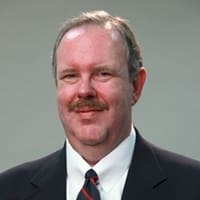Predictive technology is driving both patient and nurse satisfaction up while pushing costs down.
It’s no secret that the healthcare industry continues to face tumultuous times. On one hand, the demand for patient care services is surging, prompted largely by an improving economy and an aging U.S. population that requires more services. On the other hand, growing shortages of qualified nurses and other clinicians leave hospitals and healthcare organizations around the country struggling to fill vacancies.
This juxtaposition of factors -rising demand amid a supply-constrained labor market -makes the ability to efficiently manage the healthcare workforce essential to an organization’s success.
Few understand this better than the HR officers charged with hiring the appropriate number of clinicians to meet patient demand -a difficult task given that the volume of patients in a healthcare facility can fluctuate daily.
Faced with these continuing pressures, a number of healthcare organizations are leveraging predictive analytics to ease scheduling challenges. This technology uses techniques such as data mining, algorithms, and computer modeling to analyze past data and make predictions about future events. This approach has been successfully leveraged in other industries for many years. For instance, in manufacturing, transportation, and financial services, predictive analytics allow organizations to save time and money and to improve performance through better resource management.
The same approach is now being applied to healthcare scheduling and staffing -healthcare organizations are finding that predictive analytics supply an accurate forecast of patient demand and staffing needs as far as 120 days in advance.
A key feature of this technology in healthcare is its customized approach. Rather than only using industry-wide averages, forecasts for patient demand and staffing need are based on historical trend data, patient census, and other factors collected directly from the healthcare provider. Advanced mathematical techniques are used to forecast future patient volumes; these forecasts are reviewed and recalibrated on a weekly basis to improve accuracy as things shift. The result is a unique forecast of patient volumes and staffing needs that is specific to each unit and to the organization -one that is actionable every day.
Armed with this information, healthcare organizations are able to stop the guesswork commonly used for staffing and accurately schedule the right number of nurses in the right places weeks or even months prior to the shift. Healthcare enterprises that have adopted predictive analytics combined with advanced labor management strategies have realized outcomes that include:
• reductions in agency nursing;
• decreases in open-shift incentives and bonus pay; and
• significant annual savings in labor spending.
Research from Avantas, an AMN Healthcare company, finds hospitals are routinely saving 4 to 7 percent of labor budgets. This is significant considering that labor is the single largest expense for healthcare organizations and represents about 53.6 percent of total operating revenue on average, according to a 2015 report by Fitch Ratings.
In addition to cost savings, healthcare enterprises employing predictive analytics are enjoying increased staff satisfaction scores and improved nurse retention – key assets for providers struggling to find and keep qualified nurses amidst unprecedented clinician shortages. In 2014, the U.S. Bureau of Labor Statistics reported the gap between healthcare job openings and job hires running at 30 percent. By 2016, that had risen to 50 percent.
Greater staff satisfaction also has been shown to correlate with improved patient satisfaction -a constant concern among healthcare providers.
Why Now?
Part of the slow uptake appears to be a lack of awareness among nurse managers, finance managers, and other healthcare leadership. A recent survey, Predictive Analytics in Healthcare: Optimizing Nurse Staffing in an Era of Workforce Shortages, by AMN Healthcare and Avantas, found that 80 percent of nurse managers – whose scheduling and staffing responsibilities involve daily struggles to cover nursing shifts amid uncertain patient demand -aren’t aware of the technology that can accurately forecast patient demand and staffing needs. However, nearly 90 percent said that such technology would be helpful in the daily scheduling and staffing of nurses.
When asked how they currently handle staff scheduling, responses from nurse managers revealed widespread use of outmoded scheduling tools. Twenty-four percent use paper-based scheduling and staffing tools, 19 percent use simple digital spreadsheets, and 23 percent don’t use any scheduling tools at all.
Ask any nurse or nurse manager about problems at work, and the same stories are heard: understaffed shifts, floating, unplanned overtime, last-minute schedule changes, imbalances between experienced and novice staff, rushed calls for contingent nurses, scheduling mistakes, gaps in staffing for specialties, and sudden changes in patient volume.
It’s generally believed that this everyday turbulence is simply the way things are and nothing can be done about it. But, predictive analytics offer a new way forward, making nurse scheduling and staffing much more efficient processes.
Jackie Larson is president of Avantas.












